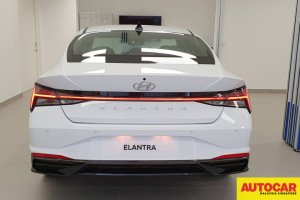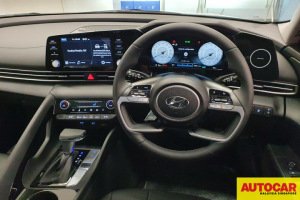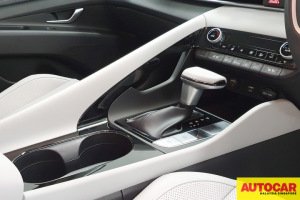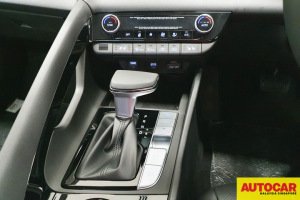
Seventh-generation Hyundai Elantra will be launched later this month with latest autonomous safety features
Hyundai-Sime Darby held a preview of its C-segment saloon, the Hyundai Elantra ahead of its launch. The seventh-generation Elantra will come with a long list of safety features. The full suite of Hyundai SmartSense will also be fitted as standard.
Hyundai SmartSense features
- Lane Keeping Assist (LKA) and Lane Following Assist (LFA) work together to prevent a driver from drifting out of their lane
- Smart Cruise Control (SCC) with Stop & Go autonomously brings the car to a complete halt if the car in front stops, and autonomously resumes travelling forward when the car in front moves.
- Forward Collision Avoidance Assist (FCA) is capable of detecting vehicles, pedestrians and cyclists
- Forward Collision Avoidance Assist Junction (FCA-JT) stops the Elantra from pulling out of junction if there is oncoming traffic
- Blind spot Collision Avoidance Assist (BCA) warns the driver if there is an object at their blindspot. If the driver continues moving out of lane, the system will brake.
- Driver Attention Warning (DAW) monitors the driver’s attentiveness and alerts the driver if it senses inattentiveness or fatigue.
- Leading Vehicle Departure Alert (LVDA) alerts the driver when the car it is following, using the SCC, moves away.
- Safe Exit Warning (SEW) prevents rear seat passengers from stepping out of the car into traffic.
- Rear Cross Traffic Collision Avoidance Assist (RCCA) alerts the driver if it senses traffic. If the driver does not react, the system brakes autonomously and holds the car for three seconds to stop the car from reversing any further.
- Rear Occupant Alert (ROA) reminds the driver of passengers in the back seats.
There are also six airbags (driver, front passenger, two side airbags and two curtain airbags), ABS, Brake Assist, electronic brake force distribution, traction control, electronic stability control, vehicle stability management and hill-start assist. ISOFIX is on the two outer rear passenger seats. The boldly designed all-new Elantra has dramatic parametric jewel pattern on the front grille and bevelled edges and triangular forms along its shoulder line and body panels. An air curtain on the front bumper channels air flow along the grooves in the door. Hyundai calls the design language Parametric Dynamics.
From the side, the fastback-style sloping roofline gives the Elantra an athletic and dramatic profile. This athleticism is further underscored by the chamfers on the doors and the rear fender which lead into the sides of the rear lights.
At launch, only one spec level of the all-new Elantra will be offered. It will be powered by a newly-developed engine, the Smartstream G1.6 and newly-developed eight-speed Smartstream Intelligent Variable Transmission (IVT). At the preview, Hyundai-Sime Darby shared with us that the dual port injection Smartstream engine is only available as a naturally-aspirated 1.6-litre and is paired with the IVT by default as the seventh-generation Elantra was developed with fuel efficiency prioritised.
The IVT gearbox is based on a CVT but uses a chain belt instead of a metallic belt. The chain belt uses belt tension to adjust the pulley diameter. This eliminates slippage and improves efficiency in power delivery. The chain belt also has a longer lifespan and is maintenance free, which makes it more reliable. The IVT technology is proprietary to Hyundai Transys and is the first of its kind in the segment.
The 1.6-litre engine produces 121bhp and 154Nm of torque. 0-100km/h takes 10.4 seconds and the top speed is 196km/h. The claimed combined fuel efficiency is 17.8km/L.
Standard features are the LED headlights, daytime running lights and rear combination lamps with turn signals in the wing mirror, 17-inch alloy rims, tyre pressure monitoring and smart trunk. The rear lights are connected by a light strip that runs across the bootlid and forms an H when lit.
The driver-centric cabin has a bar along the gear console that physically demarcates the driver’s side from the passenger side. On the driver’s side, there is Smart Temperature Comfort Control.
The driver’s seat has eight-way power adjustment with two-way lumbar support. The steering wheel with Both front seats have hot and cold ventilation with separate fan and temperature settings. Airconditioning is automatic, dual zone. There are rear vents. The handbrake is electric with auto hold. The rear seats have 60-40 split for access to the 474 litre boot.
All the displays in the Elantra are digital. The infotainment is on a eight-inch touchscreen with Android Auto and Apple Carplay fitted. The Bluetooth has multi-connection for media but phone calls are single connection only. There is a wireless charging tray as well as one front 12volt and USB ports around the cabin.
The instrument cluster is a 10.25-inch SupervisionTFT LCD full colour display. There are four drive modes, Normal and Smart, Eco and Sport. In Smart mode, the car adjusts engine responsiveness, steering sensitivity and suspension according to the driver’s input.
The all-new seventh-generation Hyundai Elantra is available in four exterior colours, Polar White, Electric Shadow, Amazon Grey and Intense Blue. The leather interior is available in two colours, Black and Light Grey.
Price will be announced at the launch. Our estimate is around RM158,000. The Hyundai Elantra will be imported, completely built-up from Korea.




























